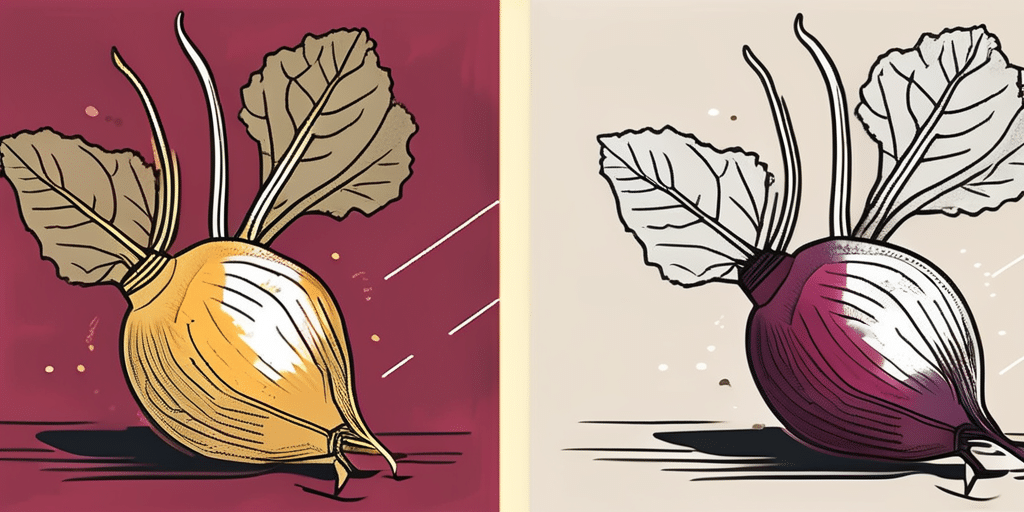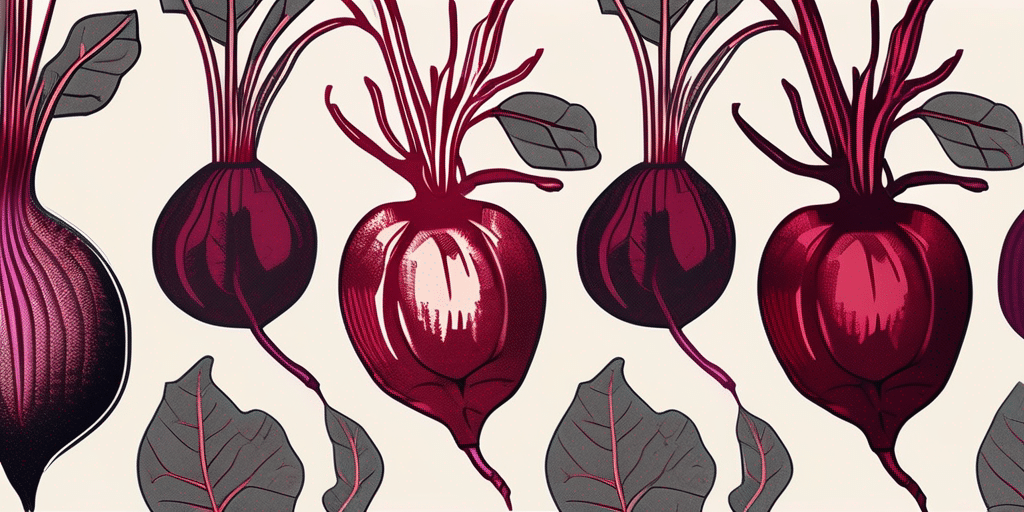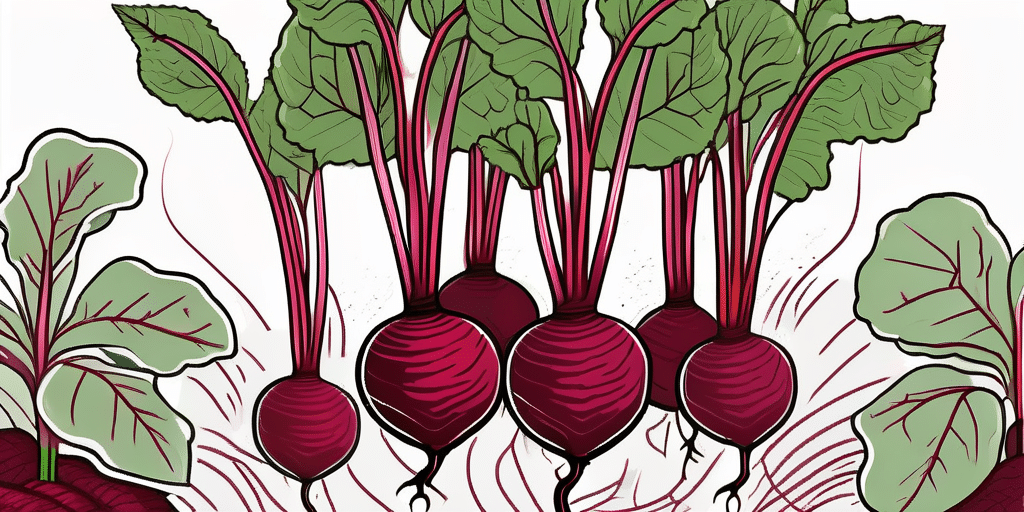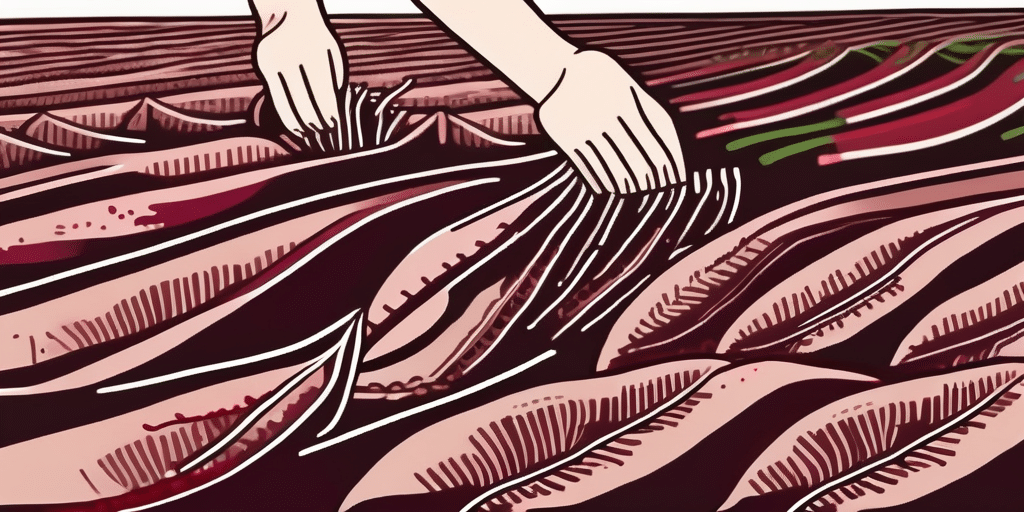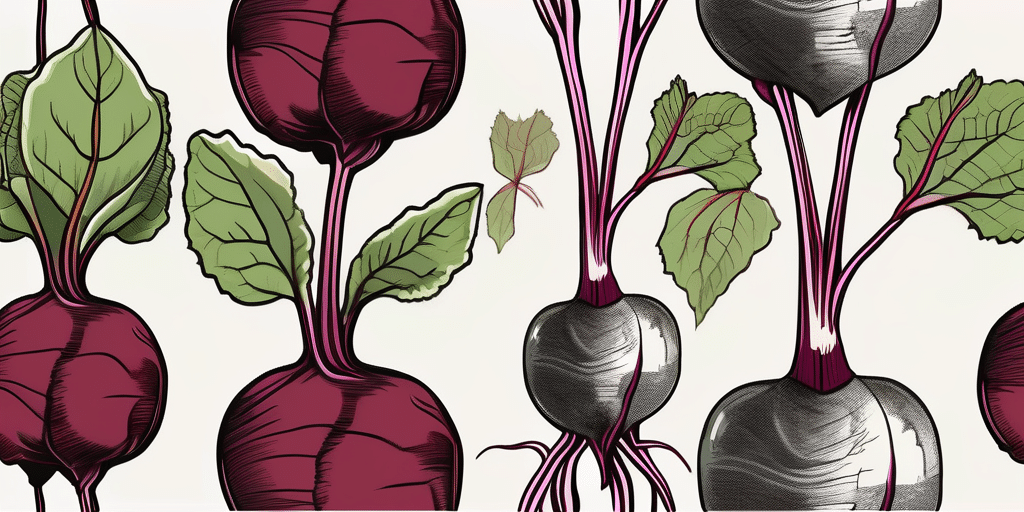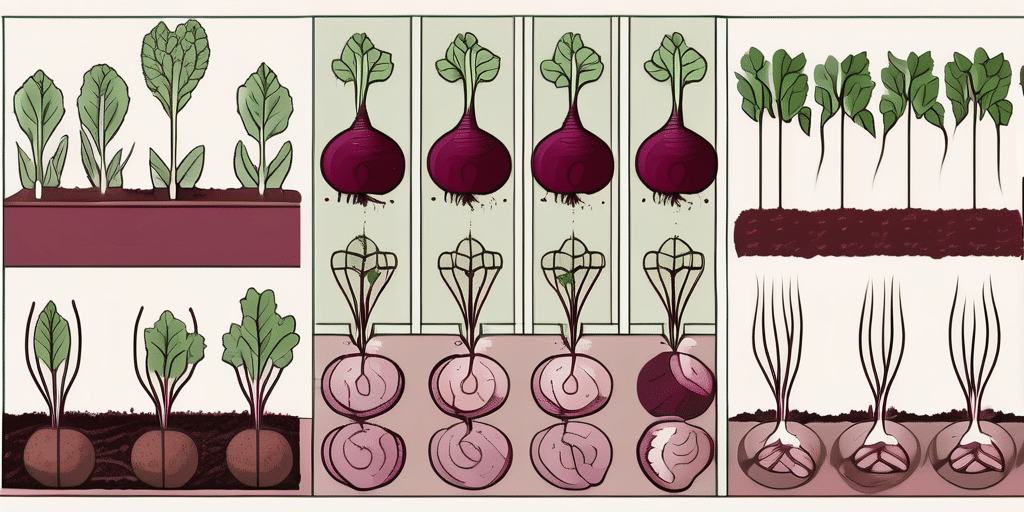Beets are a delicious and nutritious addition to any diet, providing an array of health benefits and a unique earthy flavor. Two popular types of beets are Cylindra beets and Ruby Queen beets. In this article, we will compare these two varieties to help you decide which is right for you.
What are Cylindra Beets?
Cylindra beets, also known as “Cylindra Radishes,” are a unique and intriguing variety of beets that stand out for their cylindrical shape and deep red color. Unlike the traditional round or globular beets, Cylindra beets boast a slender and elongated form that catches the eye and adds a touch of elegance to any dish. Their smooth skin and sweet, tender flesh make them a popular choice among culinary enthusiasts looking to experiment with different beet varieties.
When it comes to the culinary world, Cylindra beets offer a plethora of advantages that make them a standout ingredient in various dishes. The cylindrical shape of these beets not only adds visual appeal but also practicality, as they are easy to slice and incorporate into salads, sandwiches, or any dish where uniformity in shape is desired. Additionally, Cylindra beets are renowned for their higher sugar content compared to other beet varieties, resulting in an exceptionally sweet and delightful flavor profile that can elevate both savory and sweet recipes.
Pros of Cylindra Beets:
- The cylindrical shape of these beets makes them easy to slice and perfect for adding to salads or sandwiches.
- Cylindra beets have a higher sugar content than other beet varieties, making them exceptionally sweet.
- They are also less prone to becoming woody or fibrous, ensuring a consistently tender texture.
Despite their numerous advantages, it’s essential to consider some potential drawbacks when working with Cylindra beets. While their elongated shape offers a unique visual appeal, it may limit their versatility in certain dishes that require whole or sliced beets in different shapes. Additionally, some may find that the flavor of Cylindra beets, while delicious, leans towards a slightly milder profile compared to the more robust taste of other beet varieties. However, these nuances in flavor can be a delightful surprise for those seeking a more subtle beet experience.
Cons of Cylindra Beets:
- The elongated shape may make them slightly less versatile for certain dishes that require whole or sliced beets.
- Their flavor, although delicious, can be slightly milder compared to other beet varieties.
What are Ruby Queen Beets?
Ruby Queen beets are a popular heirloom variety cherished for their vibrant red color and rich flavor. These beets are typically round or slightly flattened, with a dark ruby-red exterior and a deep, sweet taste.
When it comes to nutritional value, Ruby Queen beets are a powerhouse. They are packed with essential vitamins and minerals, including folate, potassium, and vitamin C. These nutrients not only support overall health but also contribute to glowing skin and a strong immune system.
One interesting fact about Ruby Queen beets is that their color is not just for show. The deep red hue comes from betalains, which are potent antioxidants with anti-inflammatory properties. Consuming Ruby Queen beets can help reduce inflammation in the body and protect against chronic diseases.
Pros of Ruby Queen Beets:
- Their intense, deep red color makes them visually appealing and perfect for garnishing salads or adding a pop of color to any dish.
- Ruby Queen beets have a stronger and sweeter flavor compared to other beet varieties, providing a more robust beet taste.
- They have a versatile nature, making them suitable for various culinary applications.
Cons of Ruby Queen Beets:
- The round shape can sometimes be more challenging to slice or dice uniformly.
- Some individuals may find the strong flavor of Ruby Queen beets overpowering.
Are Cylindra Beets or Ruby Queen Beets Right for You?
Choosing between Cylindra beets and Ruby Queen beets ultimately depends on your personal preferences and culinary needs. If you enjoy a sweeter and milder beet flavor, along with the convenience of their elongated shape, Cylindra beets are an excellent choice. On the other hand, if you prefer a visually stunning presentation and a more robust beet taste, Ruby Queen beets would be a great addition to your culinary repertoire.
Cylindra beets, also known as Formanova, are a Danish heirloom variety that originated in the early 20th century. Their unique cylindrical shape makes them ideal for slicing into uniform rounds, perfect for pickling or roasting. The elongated form of Cylindra beets also means less peeling and chopping, saving you time in the kitchen. These beets are known for their tender texture and earthy-sweet flavor, making them a versatile ingredient in both savory and sweet dishes.
Ruby Queen beets, on the other hand, are prized for their vibrant reddish-purple hue that adds a pop of color to any dish. This variety is a classic beet with a round shape and a slightly more pronounced earthy flavor compared to Cylindra beets. Ruby Queen beets are often enjoyed roasted or boiled to bring out their natural sweetness and tender texture. Their rich color not only enhances the visual appeal of salads and side dishes but also indicates a high concentration of beneficial nutrients like antioxidants and vitamins.
Frequently Asked Questions
Q: Can both Cylindra and Ruby Queen beets be used in cooking?
A: Yes, both varieties can be used in various cooking methods. They can be baked, roasted, boiled, or steamed, and are delicious when incorporated into recipes for soups, salads, side dishes, or pickled beet preparations.
Q: Are both Cylindra and Ruby Queen beets nutritious?
A: Absolutely! Both Cylindra and Ruby Queen beets are packed with essential nutrients. They are an excellent source of vitamins, minerals, fiber, and antioxidants such as folate, potassium, and vitamin C. Including either variety in your diet can contribute to overall health and wellbeing.
Q: Where can I purchase Cylindra and Ruby Queen beets?
A: Both types of beets can usually be found at farmers’ markets, local grocery stores, or specialty produce stores. You can also consider growing them in your own garden. Check with local farmers or your agricultural extension office for availability.
Q: Can I use either variety of beet in juicing?
A: Yes, Cylindra and Ruby Queen beets can both be used for juicing. Their natural sweetness and vibrant colors make them a popular choice for homemade beet juices and smoothies.
When it comes to cooking with beets, the possibilities are endless. You can roast them to bring out their natural sweetness and enhance their earthy flavor. Simply toss them in olive oil, sprinkle with salt and pepper, and roast in the oven until tender. The caramelization that occurs during roasting adds a delightful depth of flavor to the beets.
If you prefer a lighter approach, steaming beets is a great option. This cooking method helps retain their vibrant color and nutrients. Simply place the beets in a steamer basket over boiling water and cook until tender. Once steamed, you can enjoy them as a side dish or incorporate them into salads for a refreshing and nutritious meal.
For those who enjoy a bit of tanginess, pickled beets are a fantastic choice. The natural sweetness of the beets combined with the tangy brine creates a flavor profile that is both unique and delicious. You can experiment with different spices and herbs to create your own signature pickled beet recipe.
Now, let’s talk about the nutritional benefits of these beets. The high levels of folate found in both Cylindra and Ruby Queen beets are essential for cell growth and development, making them an excellent choice for pregnant women. Additionally, the potassium content in beets helps regulate blood pressure and maintain a healthy heart.
Furthermore, the fiber found in beets aids in digestion and promotes a healthy gut. It can also help you feel fuller for longer, which can be beneficial for those trying to maintain a healthy weight. And let’s not forget about the antioxidants present in these beets. Antioxidants help protect the body against free radicals, reducing the risk of chronic diseases.
In conclusion, both Cylindra beets and Ruby Queen beets offer unique qualities that cater to different preferences and culinary needs. Whichever variety you choose, rest assured that you are adding a flavorful and nutritious vegetable to your meals. So go ahead, experiment with these beets, and enjoy the diverse tastes and benefits they bring to your table!
Join Our Gardening Community
Ready to transform your culinary creations with homegrown beets? Subscribe for free to How to Grow Everything and start building the garden of your dreams today! Receive personalized gardening advice tailored to your grow zone and experience level, along with the best gardening tips and special offers delivered straight to your inbox. It’s 100% free, with no spam, just valuable insights from our family to yours. Grow your knowledge and your garden with us!

